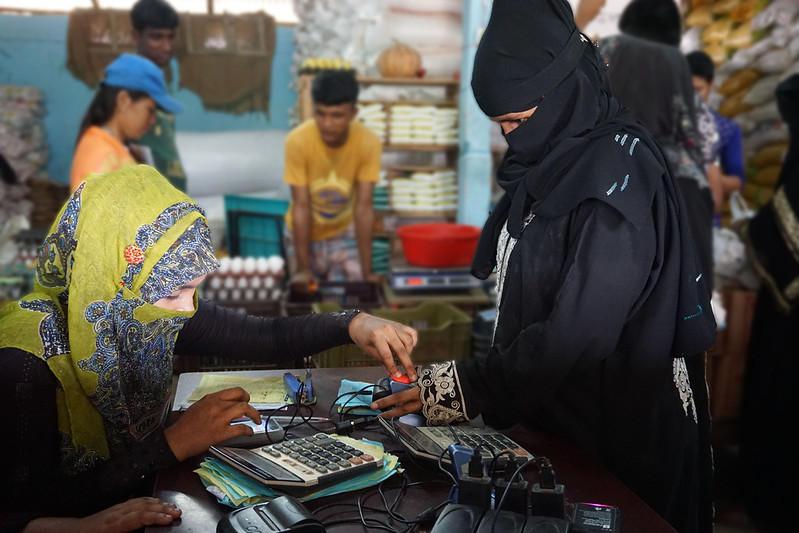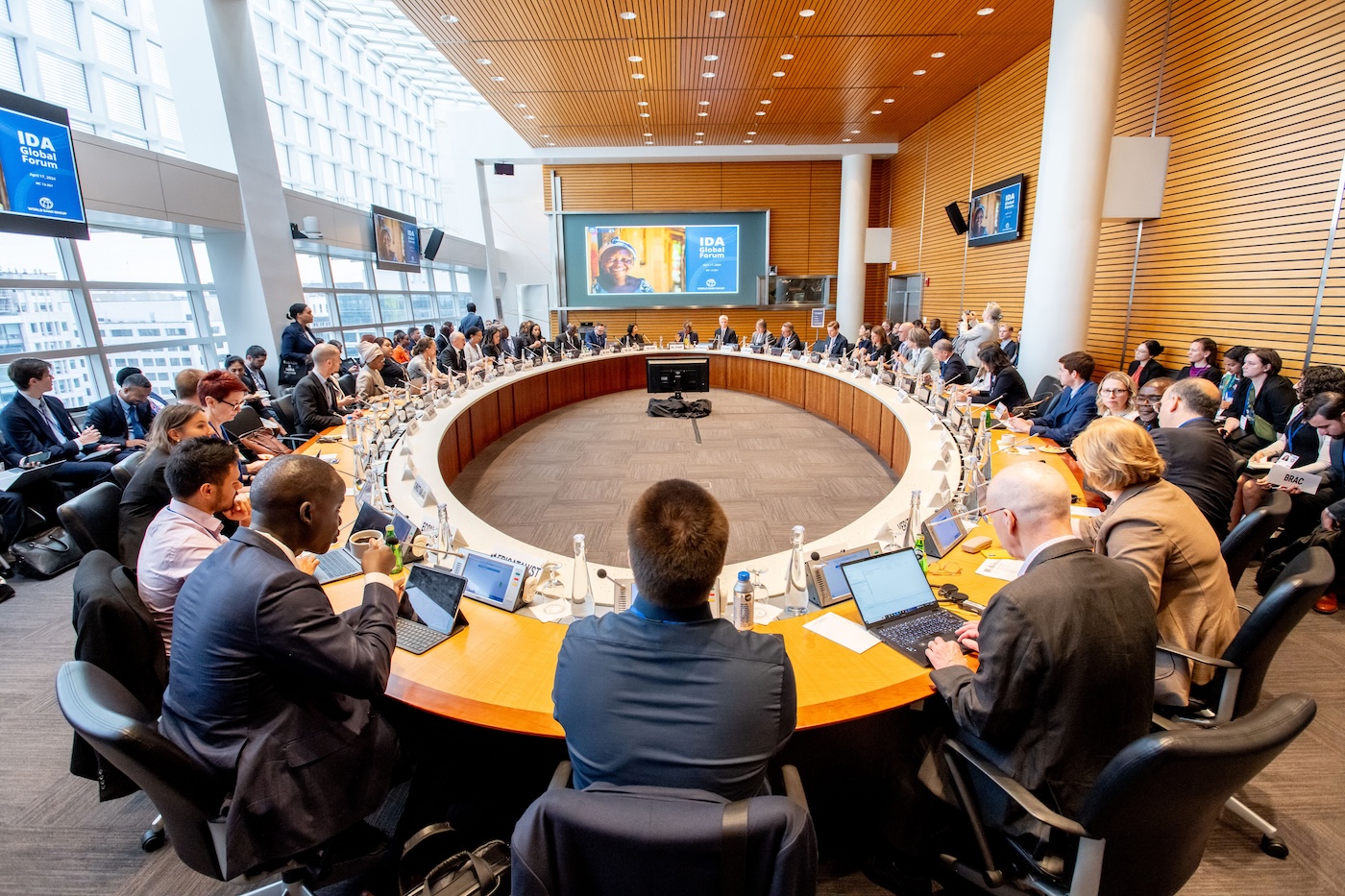Recommended
Governments around the world are implementing a variety of measures to dull the blow of mass income loss and unemployment caused by the COVID-19 pandemic and recession. Cash transfers, whether targeted or universal, have been one of the most popular remedies used to date. While the design of individual cash transfer programs varies greatly by country and by context, all are an attempt to mitigate the economic shock caused by the ongoing pandemic. The design of these programs, however, also has important implications for exactly which people have access to and control over the funds distributed. Given persistent gender gaps in financial and digital literacy, access to technology, and identification documents, women may come up short unless governments design and implement programs with those gender-specific constraints in mind.
As of June 12, 2020, 131 countries have implemented 271 cash transfer programs as part of their response to COVID-19. These range from very small-scale, highly targeted programs such as Burkina Faso’s targeted transfers to informal fruit and vegetable sellers, to universal cash transfers like those in Hong Kong and Singapore. The vast majority of cash transfers deployed in response to COVID-19 have been targeted programs, largely to those whose work is presumed interrupted due to the pandemic.
With any cash transfer program, there are gender-related implications of targeting, access, and uptake. Here are a few things to keep in mind for the design and implementation of emergency response cash transfers to ensure women receive equitable access.
Carefully consider how gender gaps will impact access to the program
No country has achieved gender equality. That means that across the globe every country has a variety of gender gaps that will affect access to cash transfers. Many of the cash transfer programs introduced or expanded to respond to COVID-19, such as Ehsaas Emergency Cash in Pakistan, rely on mobile phone or online registration. But in low- and middle-income countries, 165 million fewer women than men own a mobile phone. Additionally, women are 20 percent less likely than men to use mobile internet. Both of these gender gaps mean that a program which relies on mobile phones for registration is likely to reach more men than women.
Gender gaps in ID are also important, as many programs require a national identification in order to register. In low-income countries, 45 percent of women do not have a national ID, compared to 30 percent of men. Similar to the above, if programs require identification in order to receive payment, they will disproportionately exclude women.
This type of analysis can, and should, be applied to any program to discover what seemingly “gender neutral” requirements may unintentionally limit access. Other such considerations may be ownership of a formal bank account or mobile money account, gender gaps in literacy and numeracy, time use and mobility, and confidence using technology. However the program is designed, at every stage an intersectional gender lens should be applied to determine what areas will cause the greatest inequity in access, and for whom (i.e., women living in rural areas, older women, migrant women, etc.).
Consider how household dynamics and gender norms will affect uptake and control over the transfer
The decision to design transfers for households or for individuals has important gender implications. On the one hand, designing transfers for households may ensure better coverage for children and make for a swifter rollout, but once the cash lands in the household, it is unlikely to be used equitably amongst all members. For decades, household cash transfers or transfers meant to benefit children have been targeted to women because some evidence suggests that women are more likely than men to use the transfers to benefit children. Recent evidence has made this picture more mixed, suggesting that in some cases fathers may be equally likely to allocate resources in ways that improve children’s outcomes. Still, directing cash transfers to men is not yet proven to ensure adult women’s outcomes improve to an equal extent.
Policymakers must carefully consider whether they want to target households or individuals, and decide how best to evaluate the benefits and drawbacks of either approach.
Another important change that can be easily adopted (at least temporarily) is to remove conditionalities on existing cash transfer programs. Programs in countries including Guatemala, the Phillippines, and Italy have waived such conditionalities. Some of these programs originally required recipients to bring children to health check-ups or ensure their enrollment in school, responsibilities overwhelmingly borne by women. Removing these conditionalities in the face of the ongoing pandemic is an important move not only to ensure women and children limit their exposure to the virus in public places, but also to avoid increasing women’s care burdens during this time. That said, there will also be a proper time and place to consider reinstituting certain conditionalities, such as those that ensure adolescent girls are able to return to school once schools have reopened.
Where possible, ensure women will receive the transfer
One way to reach women is to simply mandate it. Many countries, such as India and Mauritania, have targeted cash transfers specifically to women, either by targeting women who are beneficiaries of existing social protection programs, or by creating new programs targeting women.
If finding women recipients is the main challenge, governments can leverage other programs’ registries, past and present, as a regional government in Mexico has done, to find eligible women. Alternatively, governments can utilize the knowledge of local community leaders (particularly useful in rural settings) and NGO workers to target women who may otherwise slip through administrative cracks. Mandating that women must make up at least a certain percentage of recipients, prioritizing the registration of women, or targeting cash transfers exclusively to women may be blunt instruments, but they can be useful in contexts with overwhelming gender gaps.
In some cases, however, a more effective approach may be to “target out” (i.e., work towards the universality of cash transfer programs) rather than “targeting in” to women specifically. More research is needed to explore the benefits and consequences of each approach for gender equality in a context-specific way. Our colleagues Alan Gelb and Anit Mukherjee, as well as Innovations for Poverty Action, the World Bank, the Better than Cash Alliance and others, are currently exploring these questions.
No need to sacrifice equity for speed
During this ongoing pandemic, there is a sense of urgency to all the recovery efforts; getting relief out quickly has been prioritized over doing it perfectly. But though the priority placed on expediency is well-founded, policymakers must remember that if cash transfers are not distributed equitably, then relief and recovery will not be equitable either. The recommendations we outline can deliver significant benefits to those most in need and those routinely excluded from such programs, and potentially do so in way that requires limited additional effort and cost.
Disclaimer
CGD blog posts reflect the views of the authors, drawing on prior research and experience in their areas of expertise. CGD is a nonpartisan, independent organization and does not take institutional positions.
Image credit for social media/web: Mohammad Al-Arief/The World Bank






